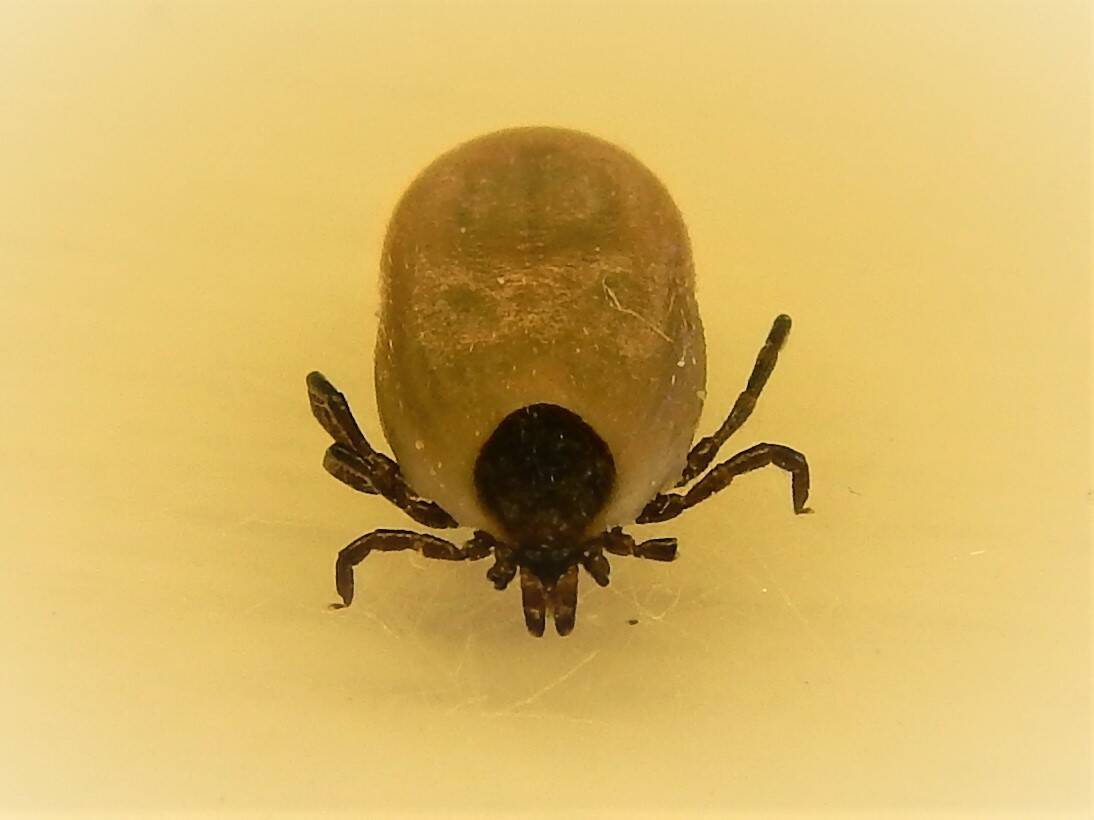by Russel Barsh
Director, Kwiaht
It’s time again for ticks! Warmer weather means that ticks will once again be questing for warm-blooded hosts including pets and people. Some islanders have already collected their first ticks of the new year for Kwiaht’s tick-borne disease study. And we would welcome more! In 2022, Kwiaht received 182 ticks from islanders; 56 percent of them came from Orcas and 38 percent from San Juan Island. Lopez, Shaw, Waldron, Obstruction, and Canoe accounted for all the rest. Nearly three-quarters of these ticks were found on dogs (70 percent), and most of the rest were on humans (21 percent); but a few were found on other domestic and wild animals cats, horses, foxes, and a lizard.
Fifteen ticks collected last year (9 percent) were carrying at least one pathogen that can cause disease in humans and other mammals. A little over half of these ticks were infected with the malaria-like parasite Babesia, which until recently was almost exclusively seen in the eastern states, but is now being found on the Pacific Coast. Babesia forms locally-adapted species relying on different primary hosts; over a hundred Babesia species are already recorded worldwide. The Babesia we have detected thus far are similar to Babesia odocoilei and Babesia microti, found on deer and voles, respectively, on the East Coast. But further study may reveal that they are novel species, evolved as this parasite spread westward. In any case, Babesiosis is a serious disease that progresses much like Lyme Disease.
Other pathogens we detected last year in island ticks include Rickettsia (associated with spotted fever), Ehrlichia, Anaplasma, and Mycoplasma. Nearly all of the infected ticks from 2022 were recovered from dogs, underscoring the importance of vigilance by dog owners, especially when returning to the islands after traveling to mainland regions where tick-borne diseases such as Babesiosis, Lyme, and Rocky Mountain Spotted Fever are more common than they have been here. A tick can remain attached to a dog, feeding happily, for up to 100 hours, enough time for its owner to drive from a Lyme hotspot such as New York, Pennsylvania, or Wisconsin back to San Juan County.
Why so many ticks on Orcas? And so few on Lopez or Shaw? It is possible that the answer lies in differences of habitat; Orcas and San Juan are relatively mountainous with large areas of unbroken woodland. Or, the answer may have to do with the kinds of intermediate wild animal hosts upon which ticks depend when they cannot find humans or pets for a blood meal. Lizards are reportedly a key wild host for ticks in the Gulf Islands, and in the San Juan Islands, lizards are mainly found on Orcas and San Juan.
Ticks collected in 2022 were mainly encountered walking in residential areas and popular public trails. This is also consistent with a strong association with pets. The missing link is a wild host, such as voles, deer, or squirrels, that may be providing a reservoir for infected ticks close to homes and parks where people and their dogs are vulnerable. This will be the focus of Kwiaht’s 2023 research on ticks, which you can support by mailing specimens to Kwiaht, PO Box 415, Lopez Island WA 98261.
If you do find a tick and can donate it to Kwiaht for study, be sure to let us know: the date the tick was found, what host it was found on (such as a human, dog, or other animal), and where the tick was probably encountered (such as “Eastsound dog park” or “Cascade Lake”). Also please let us know if you had traveled to the mainland within two weeks prior to discovering the tick. Kwiaht tick researchers cooperate with the Orcas Animal Protection Society, Wolf Hollow Wildlife Rehabilitation Center, and the Zoonotic Diseases unit of Washington State Department of Health.




